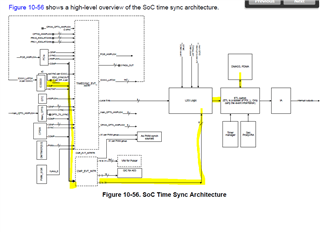I am using Am64x with No-RTOS. I have a few questions regarding Transfer Request
1. Are we forced to use a specific type of transfer request for the BCDMA? I am using Am64x, Is it obligated to use the TR15 type based on its hardware implementation of it? Because in the TRM and also the examples it is only using TR15 Type. If I use TR15 Type and I only want one dimension, I can simply set the icnt1-3 = 1 and dim1-3 =0?
2. If I use the BCDMA to move data through GPMC to an external ASIC, Is there any specific limitation/requirement that I should consider for setting the icnt?
3. can the output event of the TR be the trigger for another transfer request?
4. What is the usage of the wait field? does it mean that we can decide on a transfer request in the same packet to preempt another transfer request?
5. Based on the TRM can have multiple transfer requests in a transfer request packet (Am64x TRM revision 2.0) and the number of times going through them is defined by Reload Count and Reload Index. Does it mean that multiple transfer requests can be assigned to a specific packet (which has a specific corresponding allocated channel number)? meaning that a packet can be shared between different devices for example the same packet corresponding to a specific channel can transfer both from UARTto memory and from ADC to memory.
Thanks,
Boshra




